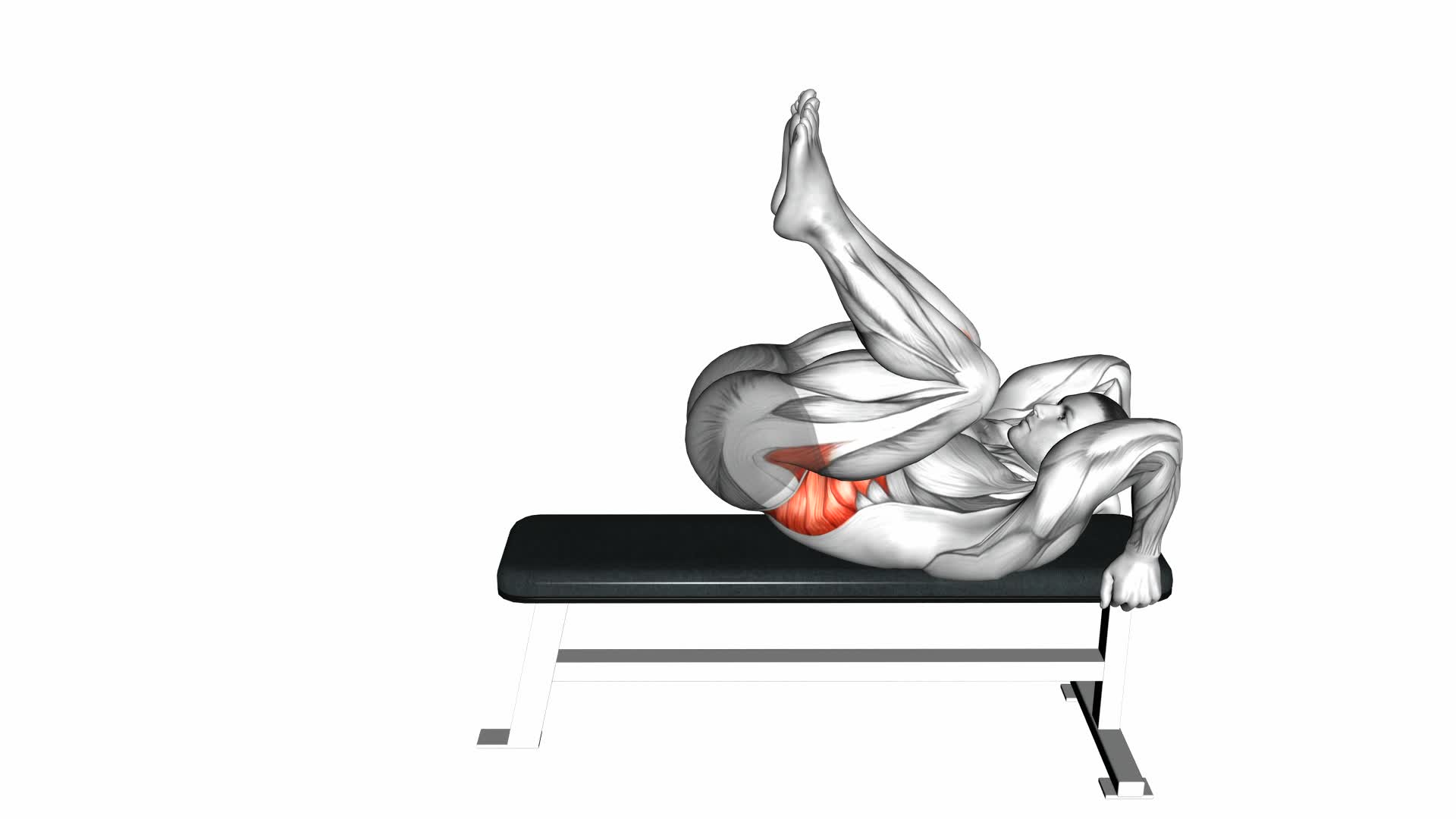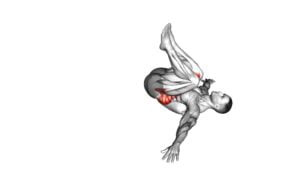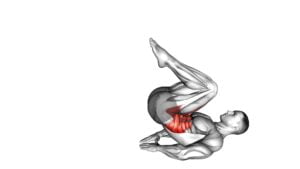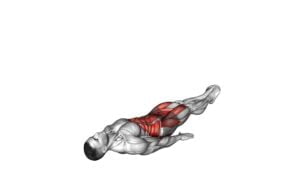Lying Leg Hip Raise – Video Exercise Guide & Tips

Looking to strengthen your lower body and improve your core stability? The lying leg hip raise is the perfect exercise for you.
Watch This Exercise Video
In this video exercise guide, we'll show you the proper form and technique, as well as common mistakes to avoid.
Whether you're a beginner or advanced, we've got modifications and variations to suit your fitness level.
Get ready to maximize the effectiveness of your workout with these tips.
Let's get started!
Key Takeaways
- The lying leg hip raise targets the hip flexors and glutes, strengthening and toning these muscles.
- This exercise improves hip stability and mobility, preventing and alleviating lower back pain.
- It also enhances balance and coordination.
- To maximize effectiveness, engage the core, control the movement, and maintain a neutral spine.
Benefits of the Lying Leg Hip Raise
You will experience several benefits by incorporating the lying leg hip raise into your workout routine. This exercise primarily targets the hip flexors and glutes, helping to strengthen and tone these muscles. By performing the lying leg hip raise, you can improve your overall hip stability and mobility.
One of the main benefits of this exercise is that it can help to prevent and alleviate lower back pain. The lying leg hip raise engages the core muscles, including the abdominal and lower back muscles, which are essential for maintaining proper posture and spinal alignment. Additionally, this exercise can improve your balance and coordination, as it requires you to stabilize your body while lifting your legs.
To modify the lying leg hip raise, you can perform the exercise with bent knees instead of straight legs. This modification can be helpful if you have limited flexibility or if you're just starting out with this exercise. Another modification is to use a stability ball under your feet to provide additional support and stability.
Incorporating the lying leg hip raise into your workout routine can bring numerous benefits, including improved hip stability, stronger glutes, and a more stable lower back. By making these modifications, you can tailor the exercise to your individual needs and fitness level.
Proper Form and Technique for the Exercise
To perform the lying leg hip raise exercise correctly, start by lying on your back with your legs straight and your arms by your sides. Here are some important tips to ensure proper form and technique:
- Keep your core engaged throughout the exercise to protect your lower back and maintain stability.
- Slowly lift your legs off the ground, using your hip muscles to raise them as high as you comfortably can.
- Pause at the top of the movement for a brief moment, squeezing your glutes.
- Lower your legs back down to the starting position with control, avoiding any sudden movements.
It's important to be aware of common mistakes that can compromise the effectiveness of the exercise or cause injury. Some common mistakes to avoid include:
- Arching your lower back excessively, which can strain the lumbar spine.
- Using momentum to lift your legs instead of relying on your hip muscles.
- Allowing your legs to drop too quickly, which can result in a loss of tension in the targeted muscles.
Modifications and variations can be made to the lying leg hip raise exercise to suit different fitness levels and goals. These include:
- Placing your hands palms down under your buttocks for added support.
- Bending your knees slightly to decrease the difficulty and engage the hip muscles differently.
- Adding ankle weights or using a resistance band around your thighs to increase the intensity.
Remember to always listen to your body and choose the modifications or variations that work best for you.
Common Mistakes to Avoid While Performing the Lying Leg Hip Raise
When performing the lying leg hip raise, it's important to maintain proper form to maximize the effectiveness of the exercise and avoid potential injuries.
One common mistake to avoid is allowing your lower back to strain by arching it excessively during the movement.
Proper Form Importance
To perform the lying leg hip raise correctly, it's crucial to maintain proper form and avoid common mistakes. Proper form not only ensures that you're targeting the correct muscles, but also helps prevent injuries and maximize the benefits of the exercise. Here are some important points to keep in mind:
- Engage your core: Your core muscles play a vital role in stabilizing your body during the exercise. It's important to engage your core throughout the movement to maintain stability and prevent strain on your lower back.
- Keep your legs straight: To fully engage your hip muscles, keep your legs straight throughout the exercise. Avoid bending your knees or allowing them to drop to the sides.
- Control the movement: Avoid swinging your legs or using momentum to lift them. Instead, focus on using your hip muscles to raise your legs in a controlled manner.
- Maintain a neutral spine: To avoid excessive strain on your lower back, make sure to keep your spine in a neutral position throughout the exercise.
Avoiding Lower Back Strain
To avoid lower back strain while performing the lying leg hip raise, it's important to maintain proper form and avoid common mistakes.
One common mistake is arching your lower back excessively, which puts excessive strain on the lumbar spine. To prevent this, engage your core muscles and keep your lower back flat on the ground throughout the exercise.
Another mistake to avoid is using momentum instead of controlled movements. This not only increases the risk of injury but also reduces the effectiveness of the exercise in strengthening the core muscles.
Instead, focus on using slow and controlled movements to effectively target your core and prevent injury.
Modifications and Variations for Different Fitness Levels
For different fitness levels, you can modify and vary the lying leg hip raise exercise. Here are some options to consider:
- Regression option: If you're a beginner or find the exercise challenging, you can start by performing the exercise with bent knees instead of straight legs. This will reduce the demand on your hip flexors and make it easier to lift your legs.
- Progression option: For those looking to increase the intensity of the exercise, you can add ankle weights or hold a dumbbell between your feet. This will provide extra resistance and challenge your hip flexors and core muscles even more.
- Modification option: If you have limited hip mobility or experience discomfort in your lower back, you can perform the exercise with a smaller range of motion. Instead of lifting your legs all the way up, lift them only as far as you can without any pain or discomfort.
- Variation option: To target your oblique muscles and add variety to your routine, you can perform the lying leg hip raise with a twist. As you lift your legs, rotate your hips to one side and then to the other side. This will engage your obliques and give you a more well-rounded workout.
By incorporating these modifications and variations, you can tailor the lying leg hip raise exercise to your specific fitness level and goals.
Now, let's move on to some tips for maximizing the effectiveness of the exercise.
Tips for Maximizing the Effectiveness of the Exercise
To maximize the effectiveness of the lying leg hip raise exercise, it's crucial to focus on engaging your core muscles and maintaining proper form throughout the movement. By doing so, you can ensure that you're targeting the intended muscles and maximizing your results.
First and foremost, pay attention to your form and technique. Lie on your back with your legs extended and your arms by your sides. As you lift your legs off the ground, make sure to keep your core tight and your lower back pressed into the floor. This will help to prevent any unnecessary strain on your lower back and ensure that your hip flexors are properly engaged.
Additionally, it's important to control the movement and avoid using momentum. Lower your legs back down slowly and with control, rather than letting them drop quickly. This will increase the time under tension for your muscles and enhance the effectiveness of the exercise.
Lastly, don't forget to breathe throughout the movement. Inhale as you lower your legs and exhale as you raise them back up. This will help you maintain focus, stability, and proper form.
By following these tips and incorporating them into your lying leg hip raise exercise, you can maximize the effectiveness of the movement and achieve better results.
Now, let's move on to a sample workout routine that incorporates the lying leg hip raise.
Sample Workout Routine Incorporating the Lying Leg Hip Raise
To incorporate the lying leg hip raise into your workout routine, start by performing 3 sets of 10 repetitions, focusing on engaging your core and maintaining proper form throughout the exercise. This exercise targets your glutes, hamstrings, and lower back, helping to strengthen and tone these areas.
Here are some workout modifications and exercise variations to keep your routine challenging and effective:
- Increase the difficulty: Once you have mastered the basic lying leg hip raise, you can add resistance by placing a dumbbell or barbell across your hips.
- Single-leg variation: Lift one leg off the ground while performing the exercise to increase the intensity and engage your glutes and hamstrings even more.
- Stability ball variation: Place a stability ball under your feet and perform the exercise, focusing on stability and balance.
- Superset with other exercises: Pair the lying leg hip raise with exercises like squats or lunges to create a challenging lower body workout.
Remember to always listen to your body and adjust the intensity and difficulty of the exercise to suit your fitness level. By incorporating these workout modifications and exercise variations, you can continue to progress and see improvements in strength and muscle tone.
Frequently Asked Questions
Can the Lying Leg Hip Raise Help With Lower Back Pain?
The lying leg hip raise can be beneficial for lower back pain. By engaging your core and glute muscles, this exercise helps to strengthen and stabilize the lower back.
Additionally, it can improve hip mobility and flexibility. To modify the lying leg hip raise, you can bend your knees or use a stability ball for support. Remember to maintain proper form and start with lighter weights before progressing.
How Many Sets and Reps Should I Do for the Lying Leg Hip Raise?
To determine the number of sets and reps for the Lying Leg Hip Raise, consider your fitness level and goals.
Start with 2-3 sets of 10-15 reps per set. As you get stronger, increase the number of sets or reps.
This exercise variation targets your glutes, hamstrings, and core muscles. It can help improve hip stability, strengthen your lower back, and enhance overall posture.
Remember to perform the exercise with proper form for maximum benefits.
Can I Do the Lying Leg Hip Raise if I Have a Pre-Existing Hip Injury?
If you have a pre-existing hip injury, it's important to be cautious when doing the lying leg hip raise. This exercise puts strain on the hips, so it may not be suitable for you.
However, there are modifications and alternative exercises you can try.
It's best to consult with a healthcare professional or a personal trainer who can provide you with specific guidance tailored to your injury.
Safety should always be the top priority.
Is It Normal to Feel a Burning Sensation in the Glutes During the Exercise?
Feeling a burning sensation in your glutes during the exercise is normal. It's a sign that your muscles are working hard.
The lying leg hip raise targets your glutes, so it's expected to feel some discomfort.
However, if the burning sensation becomes too intense or painful, it's important to listen to your body and stop the exercise.
Remember to always warm up properly and consult with a healthcare professional if you have any concerns about your hip injury.
Can I Incorporate the Lying Leg Hip Raise Into My Cardio Routine?
Yes, you can definitely incorporate the lying leg hip raise into your cardio routine.
This exercise is great for targeting your glutes, hamstrings, and core muscles.
By adding it to your HIIT workouts, you'll not only improve your cardiovascular endurance, but also strengthen your core.
The lying leg hip raise is a versatile exercise that can be done anywhere, making it a convenient addition to your cardio routine.
Conclusion
Incorporating the lying leg hip raise into your workout routine can be highly beneficial for strengthening your core and hip muscles. By maintaining proper form and avoiding common mistakes, you can maximize the effectiveness of this exercise.
Additionally, modifying the exercise to suit your fitness level and incorporating variations can provide a challenge and help you progress. Follow these tips and techniques to achieve optimal results and enhance your overall fitness.

Author
Years ago, the spark of my life’s passion ignited in my mind the moment I stepped into the local gym for the first time. The inaugural bead of perspiration, the initial endeavor, the very first surge of endorphins, and a sense of pride that washed over me post-workout marked the beginning of my deep-seated interest in strength sports, fitness, and sports nutrition. This very curiosity blossomed rapidly into a profound fascination, propelling me to earn a Master’s degree in Physical Education from the Academy of Physical Education in Krakow, followed by a Sports Manager diploma from the Jagiellonian University. My journey of growth led me to gain more specialized qualifications, such as being a certified personal trainer with a focus on sports dietetics, a lifeguard, and an instructor for wellness and corrective gymnastics. Theoretical knowledge paired seamlessly with practical experience, reinforcing my belief that the transformation of individuals under my guidance was also a reflection of my personal growth. This belief holds true even today. Each day, I strive to push the boundaries and explore new realms. These realms gently elevate me to greater heights. The unique combination of passion for my field and the continuous quest for growth fuels my drive to break new ground.







